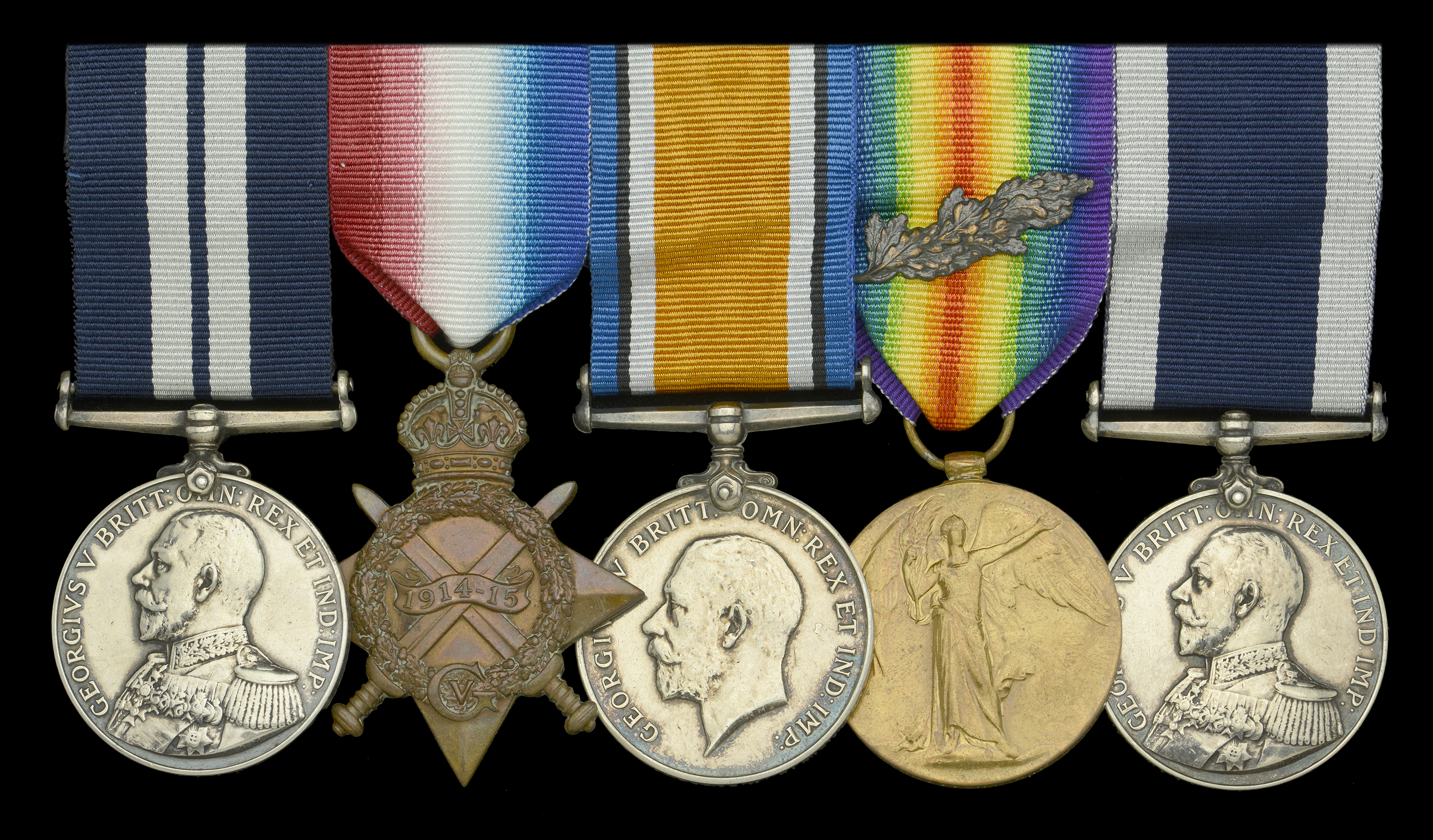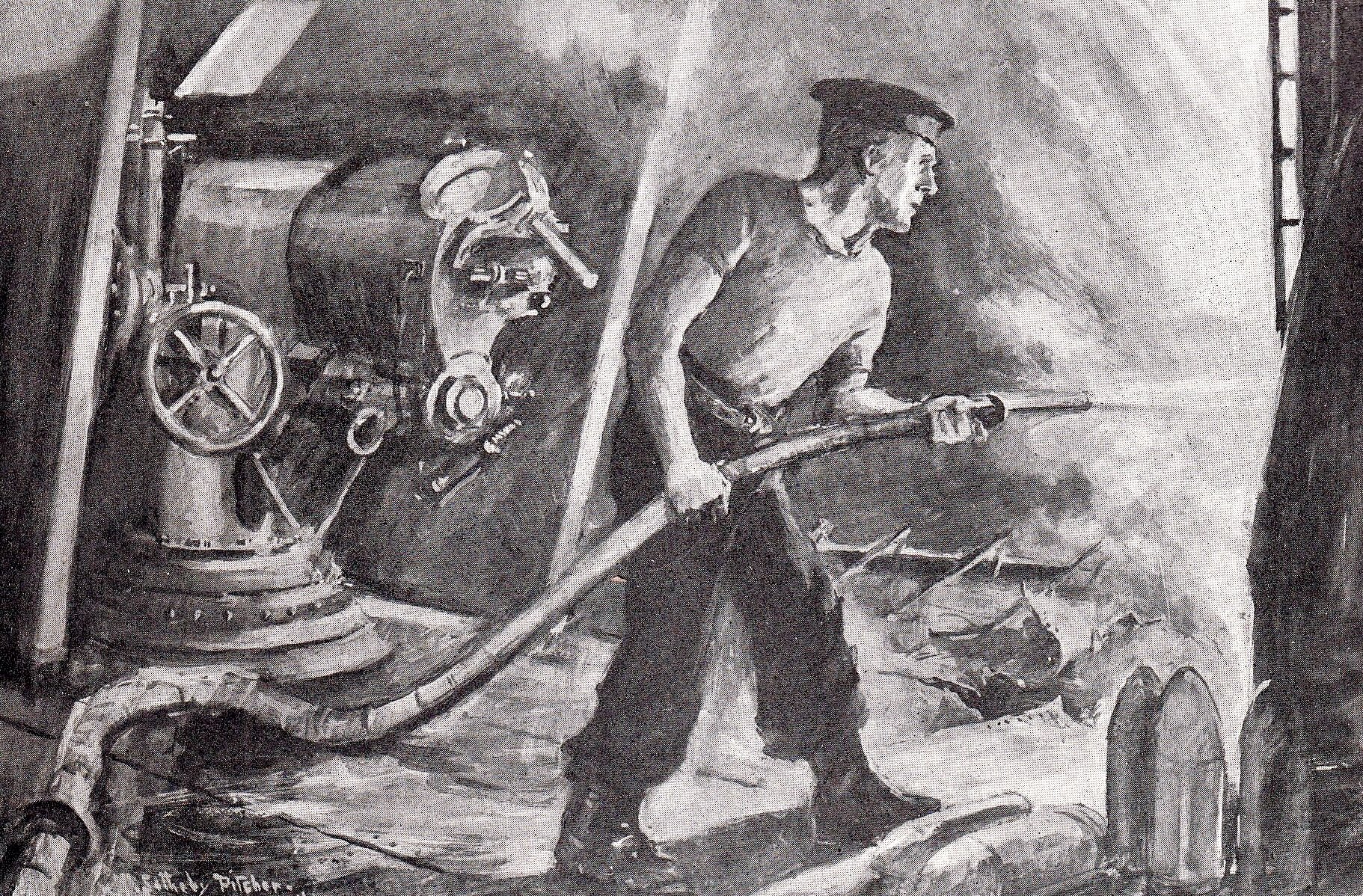The rare Great War D.S.M. group of five awarded to Stoker Petty Officer A. Britton, Royal Navy, who was decorated for his gallantry in H.M.S. Laurel at the battle of Heligoland Bight in August 1914, his actions subsequently featuring in Deeds That Thrill the Empire Distinguished Service Medal, G.V.R. (289893 A. Britton, Sto. P.O., H.M.S. Laurel); 1914-15 Star (289893 A. Britton D.S.M., S.P.O., R.N.); British War and Victory Medals, with M.I.D. oak leaves (289893 A. Britton. S.P.O., R.N.); Royal Navy L.S. & G.C., G.V.R., 1st issue (289893 Alfred Britton, Sto. P.O., H.M.S. Hecla:) mounted as worn, nearly very fine (5) £2,400-£2,800 --- Importation Duty This lot is subject to importation duty of 5% on the hammer price unless exported outside the UK --- --- Provenance: Dix Noonan Webb, June 2002. One of 23 D.S.M.s for the battle of Heligoland Bight on 28 August 1914, the only D.S.M.s to be gazetted in 1914. D.S.M. London Gazette 23 October 1914. The recommendation states: ‘George H. Sturdy, Chief Stoker, and Alfred Britton, Stoker Petty Officer, both of H.M.S. Laurel, who both showed great coolness in putting out a fire near the centre gun after an explosion had occurred there; several lyddite shells were lying in the immediate vicinity.’ Alfred Britton was born at Stanstead, Suffolk on 23 November 1879, and joined the Royal Navy as a Stoker 2nd Class in September 1898. Having then been advanced to Stoker Petty Officer in December 1908 and awarded his L.S. & G.C. Medal in September 1913, he joined the destroyer H.M.S. Laurel in April 1914 and remained likewise employed for the duration of the Great War. Of events in the Heligoland Bight on 28 August 1914, Deeds That Thrill the Empire takes up the story: ‘When the action was at its hottest, the Laurel, Liberty, Lysander and Laertes found themselves suddenly in action against three of the enemy’s cruisers and a number of destroyers. In the early stages of the action Laurel and Liberty, which had been sent in advance of the light cruisers, were both exposed for some time to an attack of overwhelming strength. The Laurel, under Commander Frank Rose, found herself in action, and almost unsupported, against two German cruisers and a number of destroyers, whose efficiency had not yet been affected by meeting ships that could reply to them on equal terms, and she suffered severely. The first shell that struck her went into the engine room, killing and wounding a number of men. Next, her forward gun was struck, and put out of action, while the troubles of the engineers’ department were soon after increased by a shot which demolished the after funnel and started a fire which threatened the destruction of the ship. In close action the fore bridge is always the main object of attack; and so it was in this case. Commander Rose was struck in the left leg by a shell splinter early in the action; but he refused to leave his post of danger. His wound was hastily bandaged; and when, some time later, he was struck in the other leg, he still declined to be taken below, although, since he could no longer stand, he was compelled to hand over the command of his ship to Lieutenant Charles Peploe. By the time assistance arrived the Laurel was almost as done as any warship could be - and it was, quite likely, a German shell that saved her. She lay, almost helpless, an easy target for the enemy, when a shot struck her amidships; and, whether it set her oil fuel smouldering, or whether it was a particularly damaging sort of shell that did not quite “come off,” it enveloped her in a thick cloud of black smoke. Before it cleared away to disclose the target more distinctly to the enemy, our cruisers had arrived, and the Laurel was saved.’ Britton was finally demobilised in October 1920. Sold with copied record of service and other research.









